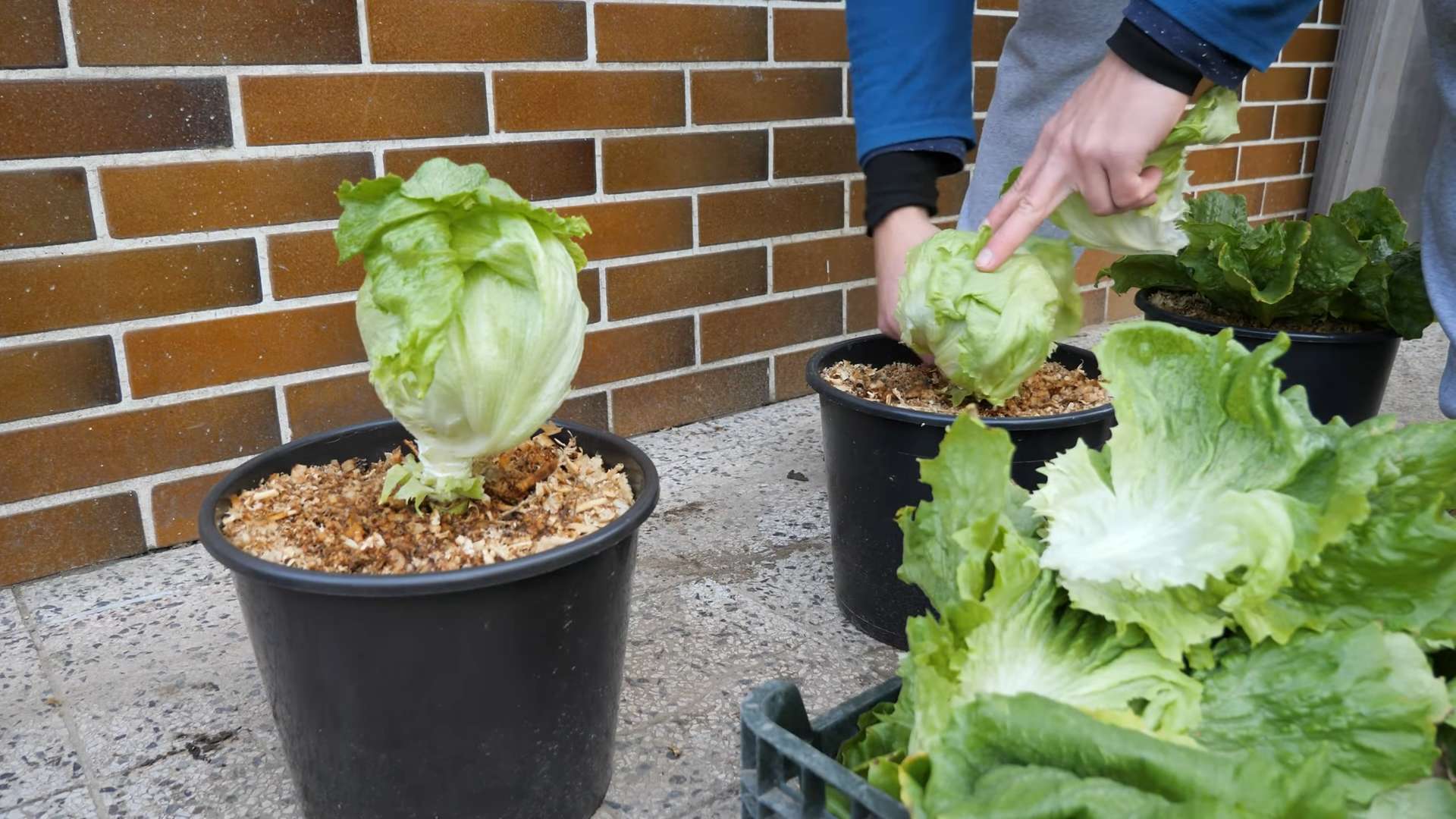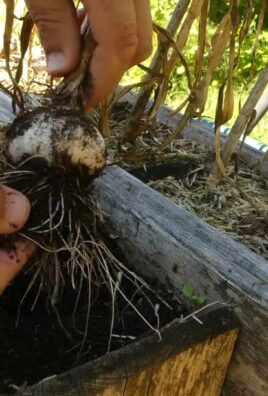Growing Iceberg Lettuce at home might seem like a challenge reserved for seasoned gardeners, but I’m here to tell you it’s totally achievable, even for beginners! Forget those limp, overpriced heads at the grocery store. Imagine crisp, refreshing lettuce, bursting with flavor, grown right in your own backyard or even on your balcony.
For generations, cultivating lettuce has been a cornerstone of home gardens, dating back to ancient civilizations who valued it for its nutritional benefits and refreshing taste. While iceberg lettuce might not have the same ancient pedigree as other varieties, its popularity soared in the mid-20th century, becoming a staple in American salads. But let’s be honest, store-bought iceberg often lacks that fresh, vibrant crunch. That’s where the magic of DIY comes in!
Why should you bother with this DIY project? Because growing iceberg lettuce yourself gives you complete control over the process. You can choose organic methods, avoid harmful pesticides, and harvest your lettuce at its peak freshness. Plus, there’s nothing quite like the satisfaction of enjoying a salad made with ingredients you’ve nurtured from seed to table. I’m going to share some simple yet effective tricks and hacks that will transform your gardening experience and ensure a bountiful harvest of crisp, delicious iceberg lettuce. Get ready to ditch the store-bought stuff and embrace the joy of homegrown goodness!

DIY: Grow Your Own Crisp Iceberg Lettuce at Home!
Hey there, fellow gardening enthusiasts! I’m so excited to share my guide on growing iceberg lettuce right in your own backyard (or even in containers!). It might seem intimidating, but trust me, with a little patience and these tips, you’ll be enjoying fresh, crunchy salads in no time. Let’s dive in!
Choosing the Right Variety and Location
Before we get our hands dirty, it’s crucial to pick the right iceberg lettuce variety and find the perfect spot for it to thrive.
* Variety Selection: Not all iceberg lettuce is created equal! Some varieties are more heat-tolerant than others, which is super important depending on your climate. Look for varieties like ‘Crispino’ or ‘Great Lakes 118’. These are known for their good head formation and resistance to bolting (going to seed prematurely). I personally had great success with ‘Crispino’ last year!
* Sunlight: Iceberg lettuce needs at least 6 hours of sunlight per day. A sunny spot in your garden is ideal. If you’re growing in containers, make sure you can move them around to follow the sun.
* Soil: Well-drained soil is key. Lettuce doesn’t like soggy feet! Amend your soil with compost or other organic matter to improve drainage and fertility. A slightly acidic soil pH (around 6.0 to 6.8) is perfect. You can test your soil with a simple soil testing kit from your local garden center.
* Temperature: Iceberg lettuce prefers cooler temperatures, ideally between 60°F and 70°F. Hot weather can cause it to bolt, making the leaves bitter. If you live in a warmer climate, consider planting in early spring or late summer for a fall harvest.
Starting Your Lettuce: Seeds vs. Seedlings
You have two main options for starting your iceberg lettuce: from seeds or from seedlings (also known as transplants). Both have their pros and cons.
* Starting from Seeds: This is the more economical option, and you have a wider variety of choices. However, it requires more patience and attention.
* Indoor Starting: I usually start my lettuce seeds indoors about 4-6 weeks before the last expected frost. This gives them a head start. Use seed-starting trays or small pots filled with seed-starting mix. Sow the seeds about ¼ inch deep and keep the soil consistently moist.
* Direct Sowing: You can also sow seeds directly into your garden bed. Wait until the soil has warmed up a bit and the danger of frost has passed. Sow the seeds about ¼ inch deep and space them about 12 inches apart.
* Using Seedlings: This is the easier option, especially for beginners. You can buy seedlings from your local garden center. Just make sure to choose healthy-looking plants with no signs of disease or pests.
Planting Your Lettuce
Whether you’re transplanting seedlings or thinning out your direct-sown seeds, here’s how to get your lettuce into the ground.
1. Prepare the Soil: Before planting, loosen the soil and amend it with compost or other organic matter. This will provide your lettuce with the nutrients it needs to grow.
2. Transplanting Seedlings: Gently remove the seedlings from their containers and plant them in the ground, spacing them about 12 inches apart. Make sure the top of the root ball is level with the soil surface.
3. Thinning Direct-Sown Seeds: Once your seedlings have emerged and have a few true leaves, thin them out so that they are spaced about 12 inches apart. This will give them enough room to grow and develop into healthy heads of lettuce. Don’t just yank them out! Gently snip the unwanted seedlings at the soil line to avoid disturbing the roots of the remaining plants.
4. Water Thoroughly: After planting, water your lettuce thoroughly. This will help the roots settle in and get established.
Caring for Your Lettuce
Now that your lettuce is planted, it’s time to give it the TLC it needs to thrive.
* Watering: Lettuce needs consistent moisture, especially during hot weather. Water deeply and regularly, but avoid overwatering, which can lead to root rot. I usually water in the morning to allow the leaves to dry before nightfall, which helps prevent fungal diseases.
* Fertilizing: Lettuce is a relatively light feeder, but it will benefit from a boost of nutrients. You can use a balanced fertilizer or a fertilizer specifically formulated for leafy greens. Follow the instructions on the fertilizer package. I like to use a liquid seaweed fertilizer diluted in water every couple of weeks.
* Weeding: Keep your lettuce patch free of weeds. Weeds compete with lettuce for nutrients and water, and they can also harbor pests and diseases. Hand-pull weeds carefully to avoid disturbing the lettuce roots.
* Mulching: Apply a layer of mulch around your lettuce plants. Mulch helps to retain moisture, suppress weeds, and regulate soil temperature. Straw, shredded leaves, or wood chips are all good options.
* Pest Control: Keep an eye out for pests like aphids, slugs, and snails. These pests can damage your lettuce leaves.
* Aphids: A strong blast of water from the hose can often dislodge aphids. You can also use insecticidal soap or neem oil.
* Slugs and Snails: These critters love to munch on lettuce leaves, especially at night. You can use slug and snail bait, or you can try hand-picking them off the plants at night. I’ve also had success with beer traps (burying a shallow dish filled with beer in the garden).
* Bolting Prevention: As I mentioned earlier, hot weather can cause lettuce to bolt. To prevent bolting, try to provide your lettuce with some shade during the hottest part of the day. You can also plant bolt-resistant varieties.
Harvesting Your Lettuce
The moment we’ve all been waiting for! Harvesting your own homegrown iceberg lettuce is so rewarding.
1. When to Harvest: Iceberg lettuce is ready to harvest when the head is firm and feels solid when you gently squeeze it. The size of the head will vary depending on the variety, but generally, it should be about 6-8 inches in diameter.
2. How to Harvest: Use a sharp knife to cut the head of lettuce from the base of the plant. Leave about an inch of the stem attached.
3. Storing Your Lettuce: After harvesting, wash the lettuce head thoroughly and dry it with a clean towel. Store it in a plastic bag in the refrigerator. It should keep for about a week.
Troubleshooting Common Problems
Even with the best care, you might encounter some problems while growing iceberg lettuce. Here are a few common issues and how to address them:
* Bolting: As mentioned earlier, bolting is when the lettuce plant sends up a flower stalk and the leaves become bitter. This is usually caused by hot weather or stress. To prevent bolting, choose bolt-resistant varieties, provide shade during hot weather, and water regularly.
* Tipburn: Tipburn is a condition where the edges of the lettuce leaves turn brown and die. This is usually caused by calcium deficiency or inconsistent watering. To prevent tipburn, make sure your soil is rich in calcium and water regularly. You can also use a calcium supplement.
* Downy Mildew: Downy mildew is a fungal disease that can cause yellow spots on the leaves. To prevent downy mildew, provide good air circulation, avoid overhead watering, and use a fungicide if necessary.
* Pests: As mentioned earlier, aphids, slugs, and snails can damage lettuce leaves. Use appropriate pest control methods to keep these pests at bay.
Extending Your Harvest
Want to enjoy fresh iceberg lettuce for as long as possible? Here are a few tips for extending your harvest:
* Succession Planting: Plant new lettuce seeds or seedlings every few weeks to ensure a continuous harvest.
* Cut-and-Come-Again Harvesting: Instead of harvesting the entire head of lettuce at once, you can harvest individual leaves as needed. This will allow the plant to continue growing and producing new leaves.
* Cold Frames or Greenhouses: If you live in a colder climate, you can use a cold frame or greenhouse to extend your growing season.
Final Thoughts
Growing your own iceberg lettuce is a rewarding experience. With a little planning and care, you can enjoy fresh, crisp salads all season long. Don’t be afraid to experiment and try different varieties to find what works best for you. Happy gardening!

Conclusion
So, there you have it! Growing your own iceberg lettuce isn’t just a fun gardening project; it’s a gateway to fresher, crisper salads and a deeper connection with the food you eat. We’ve walked through the steps, from seed to harvest, and hopefully demystified the process. The beauty of this DIY approach is the control you gain over the quality and freshness of your lettuce. No more wilted, pre-packaged leaves from the grocery store!
Why is this DIY trick a must-try? Because it empowers you to enjoy the unparalleled taste of freshly harvested iceberg lettuce, bursting with flavor and nutrients that are often lost in transit and storage. Imagine the satisfaction of serving a salad made entirely from ingredients you nurtured yourself. Plus, you’ll be reducing your carbon footprint by cutting down on transportation and packaging waste. It’s a win-win for your taste buds and the planet!
But the journey doesn’t end here. Feel free to experiment with different varieties of iceberg lettuce. Some are more heat-tolerant than others, making them better suited for warmer climates. You can also try succession planting, sowing seeds every few weeks to ensure a continuous harvest throughout the growing season. Consider companion planting too! Marigolds can help deter pests, while herbs like basil can enhance the flavor of your lettuce.
Don’t be afraid to get your hands dirty and embrace the learning process. Gardening is all about experimentation and adapting to your local environment. And remember, even if you encounter a few challenges along the way, the reward of biting into a crisp, homegrown head of iceberg lettuce is well worth the effort.
We wholeheartedly encourage you to give this DIY trick a try. Start small, perhaps with just a few plants, and gradually expand your garden as you gain confidence. And most importantly, share your experience with us! We’d love to hear about your successes, your challenges, and any tips or tricks you discover along the way. Post photos of your beautiful iceberg lettuce on social media and tag us. Let’s build a community of home gardeners who are passionate about fresh, healthy food. Happy growing!
Frequently Asked Questions (FAQ)
What is the best time of year to plant iceberg lettuce?
The best time to plant iceberg lettuce depends on your climate. In cooler climates, you can start seeds indoors 6-8 weeks before the last expected frost and transplant them outdoors once the soil has warmed up. In warmer climates, you can plant seeds directly in the ground in the fall or early winter for a spring harvest. Avoid planting during the hottest months of summer, as iceberg lettuce is sensitive to heat and may bolt (go to seed prematurely).
How much sunlight does iceberg lettuce need?
Iceberg lettuce needs at least 6 hours of sunlight per day to thrive. Choose a location in your garden that receives full sun, especially in cooler climates. In warmer climates, some afternoon shade can help prevent bolting.
What type of soil is best for growing iceberg lettuce?
Iceberg lettuce prefers well-drained, fertile soil that is rich in organic matter. Amend your soil with compost or aged manure before planting to improve its fertility and drainage. The ideal soil pH for iceberg lettuce is between 6.0 and 7.0.
How often should I water iceberg lettuce?
Iceberg lettuce needs consistent moisture to grow properly. Water deeply and regularly, especially during hot, dry weather. Aim to keep the soil consistently moist but not waterlogged. Avoid overhead watering, as this can lead to fungal diseases. Drip irrigation or soaker hoses are excellent options for watering lettuce.
How do I prevent iceberg lettuce from bolting?
Bolting is a common problem with iceberg lettuce, especially in hot weather. To prevent bolting, choose heat-tolerant varieties, provide afternoon shade, and water regularly. You can also mulch around your plants to help keep the soil cool. Harvest your lettuce as soon as it is mature to prevent it from bolting.
What are some common pests and diseases that affect iceberg lettuce?
Common pests that affect iceberg lettuce include aphids, slugs, snails, and cutworms. You can control these pests with organic methods such as handpicking, using insecticidal soap, or applying diatomaceous earth. Common diseases that affect iceberg lettuce include downy mildew, powdery mildew, and bottom rot. Prevent these diseases by providing good air circulation, avoiding overhead watering, and using disease-resistant varieties.
How do I harvest iceberg lettuce?
You can harvest iceberg lettuce when the head is firm and well-formed. Use a sharp knife to cut the head at the base of the plant. You can also harvest individual leaves as needed, but this will slow down the growth of the head.
Can I grow iceberg lettuce in containers?
Yes, you can grow iceberg lettuce in containers. Choose a container that is at least 12 inches deep and wide. Use a well-draining potting mix and water regularly. Place the container in a location that receives full sun.
How long does it take for iceberg lettuce to mature?
Iceberg lettuce typically takes 60-80 days to mature from seed. However, the exact time will depend on the variety, climate, and growing conditions.
Is iceberg lettuce nutritious?
While often criticized for being less nutritious than other types of lettuce, iceberg lettuce still provides essential vitamins and minerals. It’s a good source of vitamin K, vitamin A, and folate. Plus, it’s low in calories and high in water content, making it a hydrating and healthy addition to your diet. Don’t underestimate the value of fresh, homegrown iceberg lettuce!
What are some good companion plants for iceberg lettuce?
Good companion plants for iceberg lettuce include carrots, radishes, cucumbers, and onions. These plants can help deter pests and improve the growth of your lettuce. Avoid planting lettuce near fennel, as it can inhibit its growth.
How can I store iceberg lettuce after harvesting?
To store iceberg lettuce after harvesting, wrap the head in a damp paper towel and place it in a plastic bag in the refrigerator. It should last for up to a week. You can also wash and dry the leaves and store them in a salad spinner or airtight container in the refrigerator.
Can I save seeds from my iceberg lettuce plants?
Saving seeds from iceberg lettuce can be tricky, as it is a biennial plant, meaning it takes two years to produce seeds. If you want to save seeds, you will need to allow a plant to overwinter and flower in the second year. However, keep in mind that iceberg lettuce is often a hybrid variety, so the seeds may not produce plants that are true to type.
What are some creative ways to use homegrown iceberg lettuce?
Beyond salads, homegrown iceberg lettuce can be used in a variety of creative ways. Try using the leaves as wraps for tacos or lettuce cups for appetizers. You can also shred it and add it to soups or stir-fries. The crisp texture of iceberg lettuce makes it a refreshing addition to any meal.





Leave a Comment